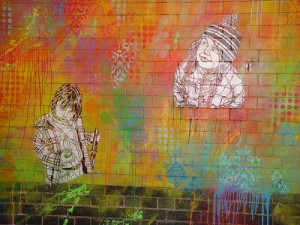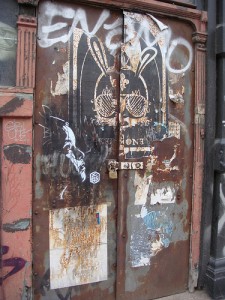If you have have ever walked passed a piece by C215, you know how powerful they are. His stencils engage the viewer and transform their surroundings. Banksy may make great political stencils, and Logan Hicks has amazing technical skills, but C215 makes some of the most beautiful and moving stencils currently on the street.
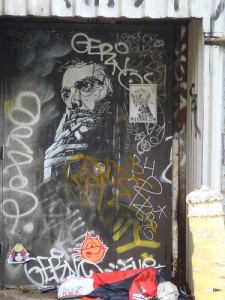
Most of his work is portraiture, but C215 also does scenes (such as the inside of a prison). Though C215 lives is Paris, his work has appeared around the world, from LA to Brazil to London. His flickr has over 1000 images (including from his recent trip to New Delhi), so be sure to have a look.
He recently exhibited at the Ink-d Gallery in Brighton, and has a book out called Stencil History X featuring interviews with many of the world’s top stencil artists.
Interview after the jump.
Heads up: I originally did this interview in French, which I am okay at, but not great.
When did you start painting on the street?
Twenty years ago in Orleans, I had a yellow Vespa, and everybody made fun of the color. I didn’t like writing, and didn’t know how to write letters well, so I painted yellow Vespas so everyone would know that they were my work.
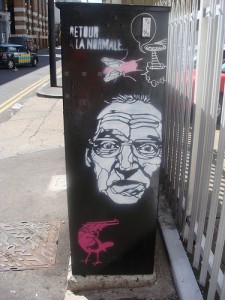
How did you develop your style of stenciling?
Two years ago, I gave up on tribal graffiti and sketching and mixed the two in my stenciling.
You have mentioned previously that Ernest Pignon-Ernestis one of your favorite artists. What is it about his work that you find so appealing?
Everything. Because he was the first, the founder of street art in Europe, his political activism, the depth of his works, the quality of his drawings. You have to see it to understand.
Where do you see “street art” in relation to other forms of contemporary art?
There is no difference, art doesn’t have a specific place and art is always contemporary.
About how much of the work you do is for galleries now compared to work for the street? How do you maintain that balance?
10% is for galleries, and the rest is on the street. I don’t produce much for the market and limit myself in that regard, it’s better to not lapse into greed and the attraction of money.
How do you develop an image? Is it true that you develop many of your stencils while you travel?
My images come from meeting people while traveling, friends, they reflect my moods. I also like to collaborate with other photographers.
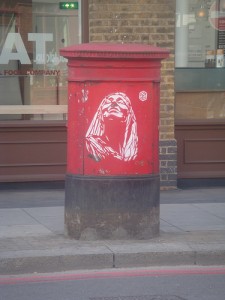
What sorts of materials do you like to work on for the street and for galleries?
Rusted steel and rotted wood.
Is there anything that you think is lacking in the street art or stenciling scene today?
Some artists who create characters, some mathematicians who construct entire universes in pixel art, some types who don’t care about what other street artists do and who concentrate on their dreams and their identities.
As I understand it, you decided to become an artist full time after the birth of your daughter Nina. Most of society might expect the exact opposite. Why did you do it this way?
Because life is short, there was nothing to lose.
